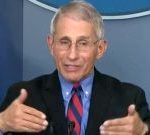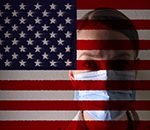
The coronavirus pandemic has fueled big increases in video visits between patients and doctors, but older Americans haven’t easily taken to the trend, a new study finds. More than one-third of those over 65 face difficulties seeing their doctor via telemedicine — especially older men in remote or rural areas who are poor, have disabilities or are in poor health. “Telemedicine is not inherently accessible, and mandating its use leaves many older adults without access to their medical care,” said lead author Dr. Kenneth Lam, a clinical fellow in geriatrics at the University of California, San Francisco. “We need further innovation in devices, services and policy to make sure older adults are not left behind during this migration,” he added in a university news release. Video visits are a good way to reach patients at home, but they require patients to be able to get online, use computer equipment and fix technical problems when they arise. For the study, Lam’s team analyzed 2018 data on more than 4,500 Medicare patients. The researchers reported that about 38% weren’t ready for video visits, including 72% of those 85 or older, mostly because they were inexperienced with technology or had a physical disability. Even with outside support, 32% were not ready, and 20% couldn’t cope with a phone visit because of dementia or difficulty hearing or communicating, the… read on >


























-300x200.jpg)










